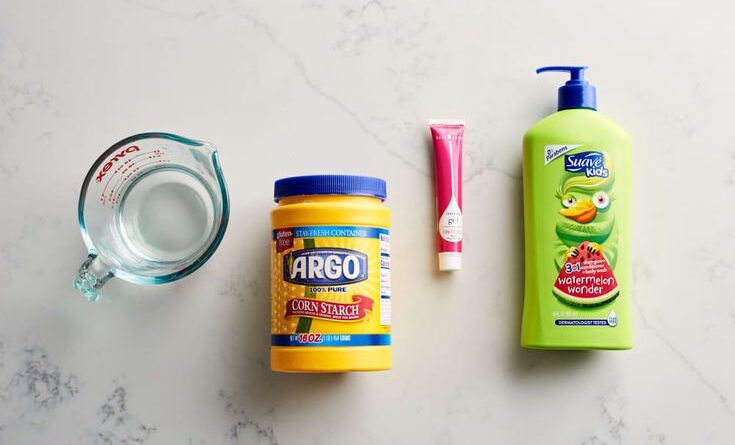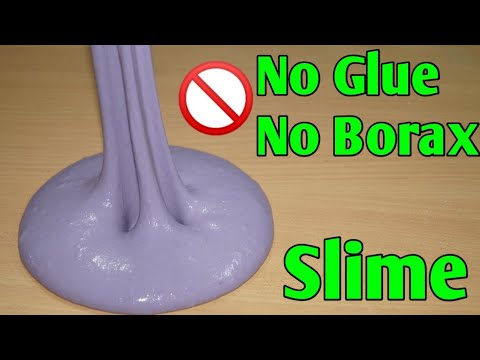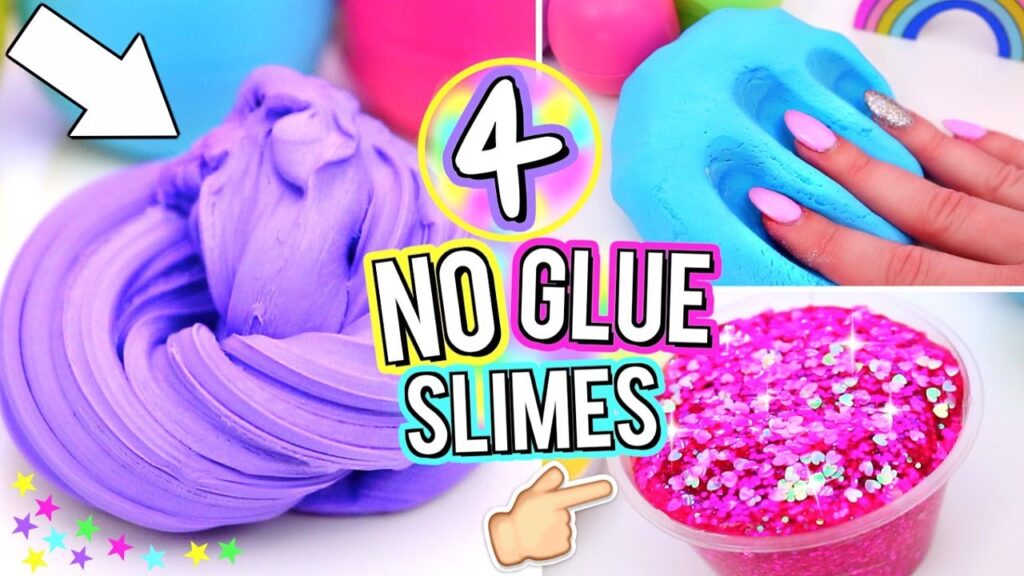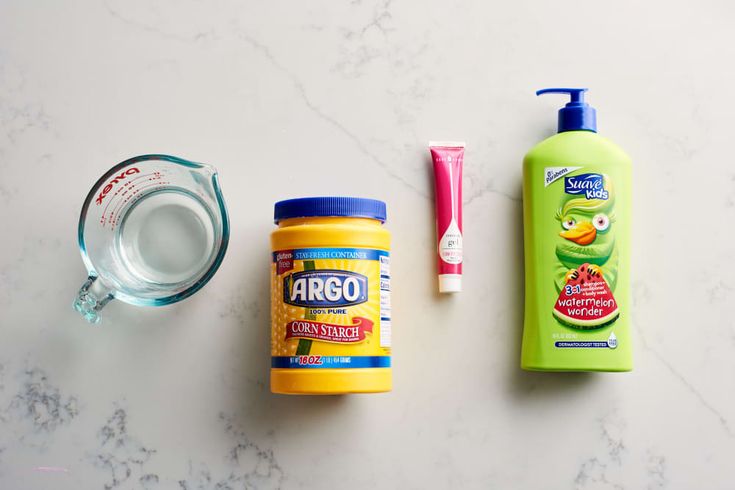
Are you curious about how to make slime without using glue? Well, you’re in luck because I’m about to spill the beans on this fascinating DIY project. Slime has become a huge trend lately, with people all over the world experimenting and creating their own unique slime concoctions. But what if you don’t have any glue on hand? Don’t worry, my friend, because I’ve got your back. In this article, I’ll share with you some alternative methods to make slime without glue that are both fun and easy. So, let’s dive in and get slimy!
One popular method to make slime without glue is by using cornstarch and water. It’s a simple yet effective recipe that results in a stretchy and satisfying slime texture. All you need to do is mix equal parts of cornstarch and water together until you achieve a thick, paste-like consistency. You can also add food coloring or glitter to make your slime more visually appealing. This method is great because cornstarch is a common household item that most people already have in their pantry.
Another option for glue-free slime is using liquid laundry detergent and salt. This recipe creates a slimy substance that is easy to manipulate and play with. Start by pouring some liquid laundry detergent into a bowl, then gradually add salt while stirring. Keep adding salt until the slime forms and has a gooey consistency. Feel free to experiment with different amounts of detergent and salt to achieve your desired texture. This method is especially fun because you can choose scented laundry detergent to add an extra sensory element to your slime.
If you’re feeling a little more adventurous, you can try making slime without glue using toothpaste and shampoo. Yes, you read that right! Toothpaste and shampoo contain ingredients that can create a slime-like substance. Start by squeezing toothpaste and shampoo into a bowl, and mix them together until a gooey mixture forms. You might need to add more of either ingredient to achieve the desired slime consistency. This method allows for a lot of creativity since there are many different types of toothpaste and shampoo with different textures and scents.
So there you have it, my friend – three fantastic ways to make slime without using any glue. Whether you choose the cornstarch and water method, the liquid laundry detergent and salt method, or the toothpaste and shampoo method, you’ll surely have a blast creating your own slime. In the upcoming article, we will dive deeper into each method and explore additional variations and tips to make your slime truly unique. Stay tuned and get ready to unleash your inner scientist!
Table of Contents
How to Make Slime without Glue
Slime has become a popular sensory toy that provides hours of fun and entertainment. While making slime traditionally involves using glue, you may be wondering if there are alternative ways to create this squishy substance without glue. The good news is that there are several methods to make slime without glue, using ingredients that you may already have at home. In this article, we will explore various methods and guide you through the process of making slime without glue.
Ingredients
Before we delve into the methods, let’s first take a look at the ingredients you will need to make slime without glue. The following ingredients are commonly used as substitutes for glue to create slime:
Substitutes for Glue
- Borax
- Laundry Detergent
- Cornstarch
- Shampoo
- Fiber Powder
- Aloe Vera Gel
Other Essential Ingredients
- Water
- Food Coloring (optional)
- Mixing Bowls
- Measuring Cups
- Stirring Utensils
Now that you have a general idea of the ingredients needed, let’s explore the different methods of making slime without glue.
Method 1: Using Borax
Borax is a common household cleaning agent and can also be used to create slime. Follow these steps to make slime using borax:
Step 1: Mixing the Borax Solution
In a mixing bowl, add 1 teaspoon of borax to 1 cup of warm water. Stir until the borax is completely dissolved.
Step 2: Preparing the Slime Mixture
In another bowl, combine 1/2 cup of water and 1/2 cup of glue substitute (such as liquid laundry starch or liquid starch) along with any desired food coloring. Mix well.
Step 3: Adding Color and Texture
Slowly pour the borax solution into the slime mixture and stir continuously. As you stir, the mixture will start to thicken and become stretchy. Once it reaches the desired consistency, remove it from the bowl and knead it with your hands until it becomes fully formed slime.

Method 2: Using Laundry Detergent
Laundry detergent can also serve as a substitute for glue when making slime. Follow these steps to create slime using laundry detergent:
Step 1: Mixing the Detergent Solution
In a bowl, combine 1/2 cup of laundry detergent with 1/4 cup of water. Mix well until the detergent is fully incorporated into the water.
Step 2: Preparing the Slime Mixture
In a separate bowl, pour 1 cup of glue substitute (such as clear liquid hand soap or dish soap) and any desired food coloring. Mix thoroughly.
Step 3: Adding Color and Texture
Gradually pour the detergent solution into the slime mixture and stir continuously. As you stir, the mixture will begin to clump together and form slime. Continue stirring until the slime reaches the desired consistency. Remove it from the bowl and knead it with your hands until it becomes smooth and stretchy.
Method 3: Using Cornstarch
Cornstarch can be used as a glue substitute to create slime that has a unique texture. Follow these steps to make slime using cornstarch:
Step 1: Creating the Cornstarch Mixture
In a bowl, combine 1/2 cup of cornstarch with 1/4 cup of water. Mix until the cornstarch is fully dissolved and the mixture becomes thick and slightly gooey.
Step 2: Preparing the Slime Mixture
In a separate bowl, add 1 cup of glue substitute (such as liquid soap or shampoo) and any desired food coloring. Mix well to combine all the ingredients.
Step 3: Adding Color and Texture
Slowly pour the cornstarch mixture into the slime mixture and stir continuously. The mixture will start to thicken and become more solid as you stir. Keep stirring until the slime reaches the desired consistency. Remove it from the bowl and knead it with your hands to achieve a smooth texture.

Method 4: Using Shampoo
Shampoo can be a surprising substitute for glue when making slime. Follow these steps to create slime using shampoo:
Step 1: Choosing the Right Shampoo
Select a shampoo that has a thick consistency and is free from oils or conditioning agents, as these can affect the slime’s texture.
Step 2: Preparing the Slime Mixture
In a bowl, pour 1 cup of shampoo and mix in any desired food coloring. Stir until the color is evenly distributed.
Step 3: Adding Color and Texture
Gradually add small amounts of water to the shampoo mixture while stirring continuously. The slime will begin to form as you add more water. Keep adding water until the desired consistency is achieved. Remove the slime from the bowl and knead it with your hands to make it more pliable and smooth.
Method 5: Using Fiber Powder
Fiber powder, such as Metamucil or psyllium husk, can create a unique slime texture. Follow these steps to make slime using fiber powder:
Step 1: Mixing the Fiber Powder Solution
In a bowl, dissolve 2 tablespoons of fiber powder in 2 cups of water. Stir until the fiber powder is fully dissolved.
Step 2: Preparing the Slime Mixture
In another bowl, combine 1 cup of glue substitute (such as body wash or hand soap) and any desired food coloring. Mix well to combine all the ingredients.
Step 3: Adding Color and Texture
Slowly pour the fiber powder solution into the slime mixture and stir continuously. The slime will start to thicken and become more gel-like as you stir. Continue stirring until the desired consistency is achieved. Remove the slime from the bowl and knead it with your hands until it becomes smooth and stretchy.

Method 6: Using Aloe Vera Gel
Aloe vera gel can be used as a glue substitute to create a soothing and scented slime. Follow these steps to make slime using aloe vera gel:
Step 1: Creating the Gel Mixture
In a bowl, combine 1 cup of aloe vera gel with any desired food coloring. Stir until the color is evenly distributed.
Step 2: Preparing the Slime Mixture
In another bowl, add 1/2 cup of glue substitute (such as liquid soap or body wash) and mix well.
Step 3: Adding Color and Texture
Gradually pour the gel mixture into the slime mixture and stir continuously. The slime will start to form and become more stretchy as you stir. Keep stirring until the desired consistency is reached. Remove the slime from the bowl and knead it with your hands until it becomes soft and pliable.
Tips and Tricks
Now that you know how to make slime without glue, here are some tips and tricks to enhance your slime-making experience:
Choosing the Right Consistency
Experiment with different ratios of ingredients to achieve your desired slime consistency. If your slime is too sticky, add more of your glue substitute or activator. If it is too stiff, add more water or liquid to make it more stretchy.
Storing Slime Properly
After making slime, store it in an airtight container to prevent it from drying out. Keep it in a cool and dry place to prolong its shelf life.
Cleaning Up After Making Slime
Slime can be messy to work with, but cleaning up is easy. Simply use warm water and soap to clean your hands, utensils, and surfaces. Avoid pouring slime down drains, as it can cause clogs. Dispose of slime in the trash instead.

Safety Precautions
While making slime can be a fun activity, it is important to take safety precautions to ensure a safe experience:
Adult Supervision
Children should always be supervised by an adult when making slime, especially when handling potentially hazardous substances like borax or laundry detergent.
Avoiding Ingestion or Contact with Eyes
Although the ingredients used in these slime recipes are generally safe, it is essential to avoid ingesting or getting them in contact with your eyes. If accidental contact occurs, rinse with water immediately.
Disposing of Slime Properly
When it comes time to dispose of old or unwanted slime, always throw it in the trash. Slime should not be flushed down the toilet or washed down the sink, as it can cause plumbing issues.
Conclusion
Creating slime without glue opens up a whole new world of possibilities for slime enthusiasts. Whether you choose to use borax, laundry detergent, cornstarch, shampoo, fiber powder, or aloe vera gel, there are numerous methods to experiment with. By following the step-by-step instructions and considering safety precautions, you can enjoy the process of making slime without glue. Get creative with colors and textures, and have fun exploring the endless possibilities of slime-making!


